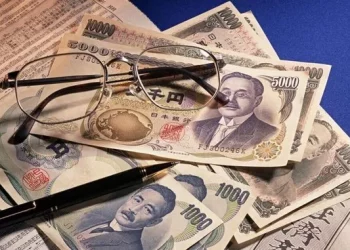The foreign exchange (forex) market is one of the largest and most liquid markets in the world, with trillions of dollars being exchanged daily. It is a global market where different currencies, such as the US Dollar (USD) and the Australian Dollar (AUD), are traded. If you are looking to convert $50 USD into Australian Dollars, understanding how the forex market works and the factors that influence exchange rates is crucial. In this article, we will discuss how the exchange rate between USD and AUD works, how much $50 American is in Australian Dollars, and the broader implications of currency conversion in the forex market.
Understanding Exchange Rates
To understand how much $50 USD is worth in Australian Dollars, we must first grasp the concept of exchange rates. An exchange rate is the value of one currency relative to another. In this case, we are concerned with the exchange rate between the US Dollar (USD) and the Australian Dollar (AUD). The exchange rate between two currencies fluctuates continuously based on various economic factors, such as inflation rates, interest rates, political stability, and overall market sentiment.
The Role of Forex Markets
The forex market determines the exchange rates between different currencies. Currency prices are influenced by global supply and demand. For instance, if the demand for USD increases, the value of the US Dollar will rise against other currencies, including the Australian Dollar. Conversely, if demand for the AUD increases, the value of the Australian Dollar will rise relative to the USD.
The forex market is open 24 hours a day, five days a week, allowing currencies to be traded across different time zones. This constant trading leads to price fluctuations, making exchange rates dynamic. For traders, understanding these fluctuations and how to capitalize on them is essential.
Exchange Rate Calculation
To calculate how much $50 USD is in AUD, you need to know the current exchange rate between the two currencies. The exchange rate is expressed as how many units of one currency you can get for a unit of another currency. For example, if the exchange rate is 1 USD = 1.50 AUD, it means that for every US Dollar, you would receive 1.50 Australian Dollars.
Let’s break down how you can convert $50 USD to AUD. Suppose the exchange rate is 1 USD = 1.50 AUD:
50 USD×1.50 AUD/USD=75 AUD
This means that if the exchange rate is 1 USD = 1.50 AUD, $50 USD would convert to 75 Australian Dollars.
How to Get the Best Exchange Rate
When converting USD to AUD, there are a few different ways to obtain the currency. Each method comes with its own exchange rates and fees, which can significantly affect the amount of AUD you receive for your $50 USD. The most common methods of exchanging currency include:
1. Banks
Banks are one of the most common ways to exchange currency. They offer relatively safe and convenient services, but they often charge higher fees or offer less favorable exchange rates. For example, the rate you get at a bank may be worse than the rate you see online or in a forex trading platform. The difference between the exchange rate provided by the bank and the actual market rate is known as the spread.
2. Currency Exchange Services
Currency exchange services, such as those at airports or in specialized exchange offices, can also offer currency conversion. While these services may be more convenient than going to a bank, they can often come with higher fees and less favorable exchange rates.
3. Online Currency Exchange Platforms
Online forex platforms like TransferWise, Revolut, and others offer more competitive exchange rates compared to traditional banks. These services often charge lower fees and provide real-time exchange rates based on current market conditions, which means you could get a better rate for converting your $50 USD to AUD.
4. ATMs
Withdrawing foreign currency directly from an ATM while traveling abroad can also be an option. However, this method may involve additional charges for international transactions or ATM withdrawals, and the exchange rate offered might not always be the best.
5. Forex Brokers
Forex brokers, who are actively engaged in the forex market, offer the ability to trade currencies. Through brokers, you can access competitive exchange rates and even use leverage to trade in larger amounts. However, brokers are typically used by forex traders for speculative purposes and not for day-to-day currency exchange.
Current Exchange Rate Between USD and AUD
The exchange rate between the US Dollar and the Australian Dollar fluctuates due to a variety of global economic factors. For example, during times of global economic uncertainty, the US Dollar tends to be a safe haven for investors, which can push up its value against other currencies like the AUD. Conversely, when the Australian economy is performing well, the Australian Dollar may rise in value relative to the USD.
To get the current exchange rate for converting $50 USD to AUD, it’s best to consult real-time forex data. Exchange rates are continuously updated throughout the trading day, and a currency’s value can change quickly in response to market events.
Factors That Affect the USD to AUD Exchange Rate
Several factors influence the exchange rate between the USD and AUD. Some of the key factors include:
1. Interest Rates
Interest rates set by central banks, such as the US Federal Reserve (Fed) and the Reserve Bank of Australia (RBA), play a crucial role in determining the value of a currency. When interest rates rise in one country, it can attract foreign investment and increase demand for that country’s currency, leading to an appreciation of the currency.
2. Economic Performance
The economic health of both the United States and Australia impacts the value of the respective currencies. A strong economy typically results in a stronger currency, while a weaker economy can lead to a depreciation in currency value. Key indicators like GDP growth, unemployment rates, and consumer confidence all influence the USD to AUD exchange rate.
3. Commodity Prices
Australia is a major exporter of commodities, including iron ore, coal, and natural gas. As a result, the Australian Dollar is often closely tied to the price of these commodities. When global commodity prices rise, the AUD tends to appreciate, and when commodity prices fall, the AUD may weaken.
4. Inflation Rates
Inflation affects purchasing power and can influence currency values. Higher inflation in a country generally leads to a weaker currency, as the central bank may respond by lowering interest rates or engaging in other monetary policies to stabilize the economy.
5. Political Stability and Market Sentiment
Political events, elections, and changes in government policy can have significant effects on currency exchange rates. Market sentiment, which reflects the overall mood of investors, also plays a role. If investors believe that a country’s political or economic conditions are unstable, the value of its currency may decline.
Example of Converting $50 USD to AUD
To put the exchange rate into context, let’s look at a practical example. Imagine you are a tourist traveling from the United States to Australia and need to exchange $50 USD for Australian Dollars. You visit a currency exchange service, and the current exchange rate is 1 USD = 1.40 AUD. Based on this rate, you can calculate how much you will receive in AUD:
50 USD×1.40 AUD/USD=70 AUD
In this case, you would receive 70 Australian Dollars in exchange for your 50 US Dollars.
How Much is $50 USD Worth in AUD in Different Market Conditions?
The value of $50 USD in Australian Dollars can vary depending on market conditions. If the USD is strong relative to the AUD, $50 USD might convert to a higher amount of AUD. On the other hand, if the USD is weak compared to the AUD, the conversion might yield fewer Australian Dollars.
For example, in a period where the exchange rate is 1 USD = 1.30 AUD, the $50 USD would convert to:
50 USD×1.30 AUD/USD=65 AUD
Alternatively, if the exchange rate shifts to 1 USD = 1.70 AUD, the conversion would result in:
50 USD×1.70 AUD/USD=85 AUD
Thus, $50 USD can be worth more or less in AUD depending on the fluctuations in the exchange rate.
Conclusion
In summary, the amount of Australian Dollars you receive for your $50 USD depends entirely on the current exchange rate between the US Dollar and the Australian Dollar. Currency exchange rates fluctuate due to various economic, political, and market factors, making it essential to monitor these factors when converting currencies. Whether you are a tourist looking to exchange money or a forex trader engaging in currency speculation, understanding how exchange rates work and keeping track of current rates can help you make informed decisions. Always consider the different methods of currency conversion, including banks, online platforms, and forex brokers, to get the best exchange rate when converting USD to AUD.
The forex market is constantly changing, and staying informed about market conditions will help you make the most of your currency exchange transactions.
Related Topics:



























